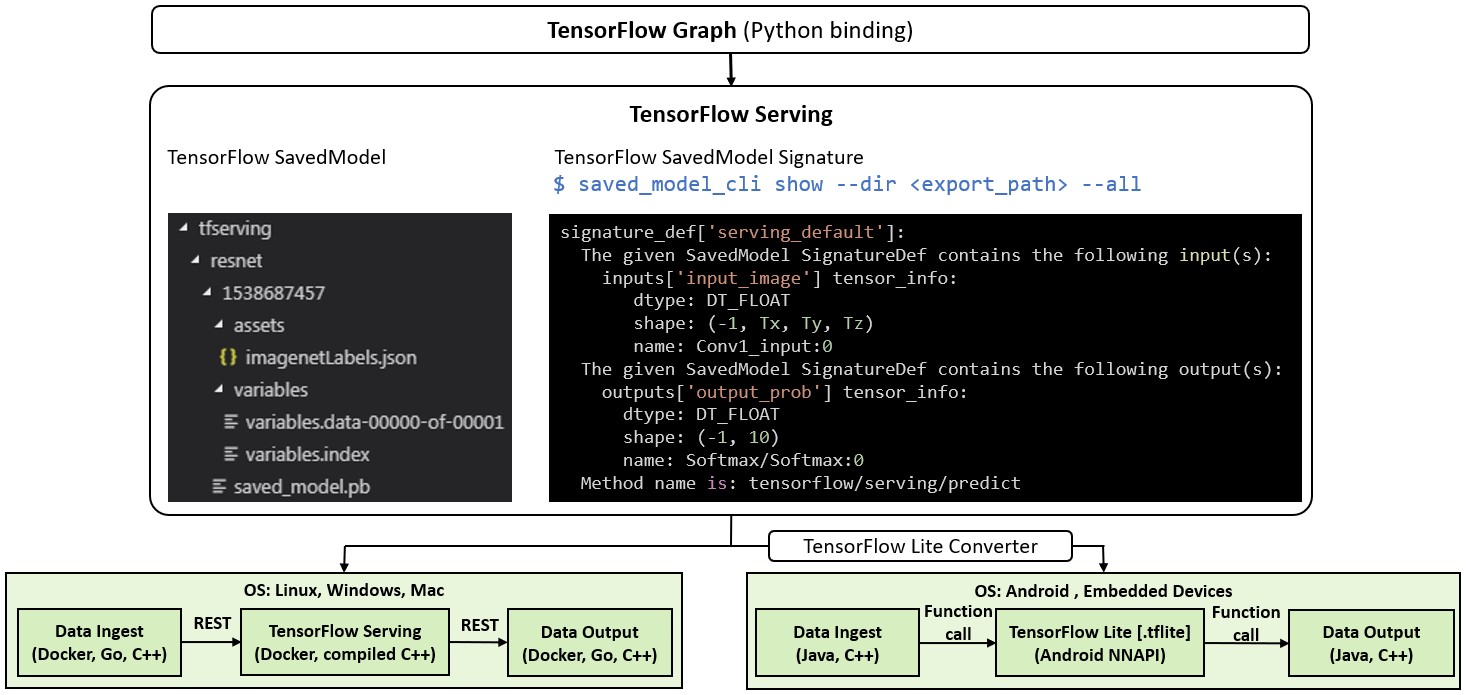TensorFlow
Every machine learning project must produce a saved model as its final deliverable.
Keras
- Do not import libraries directly from the
Keraspackage such asimport keras.utilsInstead, always import from the
Tensorflowpackage. For example,import tensorflow.keras.utils
SavedModel
- Contains complete architecture and weights.
- Independent of the source code that created the model.
- Suitable for deployment via TensorFlow Serving, TensorFlow Lite, in many programming languages (e.g., C++, Java, Go)
- A saved model produces a folder consisting of the following files:
tfserving # TensorFlow Serving ├── cnn # model name | ├── 1 # model version | | ├── assets/ | | ├── variables/ | | | ├── variables.data-*****-of-***** | | | └── variables.index | | └── saved_model.pb | └── 2 # model version | ├── assets/ | ├── variables/ | | ├── variables.data-*****-of-***** | | └── variables.index | └── saved_model.pb └── mtcnn # model name └── 1 # model version ├── assets/ ├── variables/ | ├── variables.data-*****-of-***** | └── variables.index └── saved_model.pb- The .pb is the MetaGraphDef which holds the graph structure. MetaGraph is a dataflow graph, plus its associated variables, assets, and signatures. A MetaGraphDef is the protocol buffer representation of a MetaGraph.
- The variables folder holds your learned weights.
- The assets folder allow you to add external files that may be needed.
- Refer to the official tutorial for saving and loading a TensorFlow model.
- A simplified example of writing TensorFlow machine learning model and saving it into SavedModel in Python is given below.
import tensorflow as tf from keras.models import Model from keras.layers import Input, Conv2D, Activation, Flatten, Dense, . . . # TensorFlow graph x_input = Input(shape=(Tx, Ty, Tz)) # Desired shape of input data x_conv = Conv2D(filters=8,kernel_size=3,strides=1,padding='same')(x_input) x_act = Activation('relu')(x_conv) x_flat = Flatten()(x_act) x_output = Dense(10, activation='softmax')(x_flat) model = Model(inputs=x_input, outputs=x_output, name='Classifier') # Define an optimizer, compile, and fit the model model.compile(loss='categorical_crossentropy', optimizer='adam', metrics=['accuracy']) model.fit(x_train, y_train, epochs=200) # Save TensorFlow model tf.saved_model.simple_save(keras.backend.get_session(), export_path, inputs={'input_image': model.inputs}, outputs={'output_prob': model.outputs}) - Show tensorflow saved model parameters. An example is as follows:
$ saved_model_cli show --dir /<path to tfserving saved model>/tfserving/resnet/1538687457 --all -
An overview of the TensorFlow SavedModel building and deploying process is illustrated here.

Leave a comment